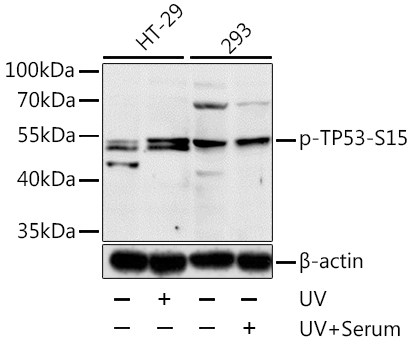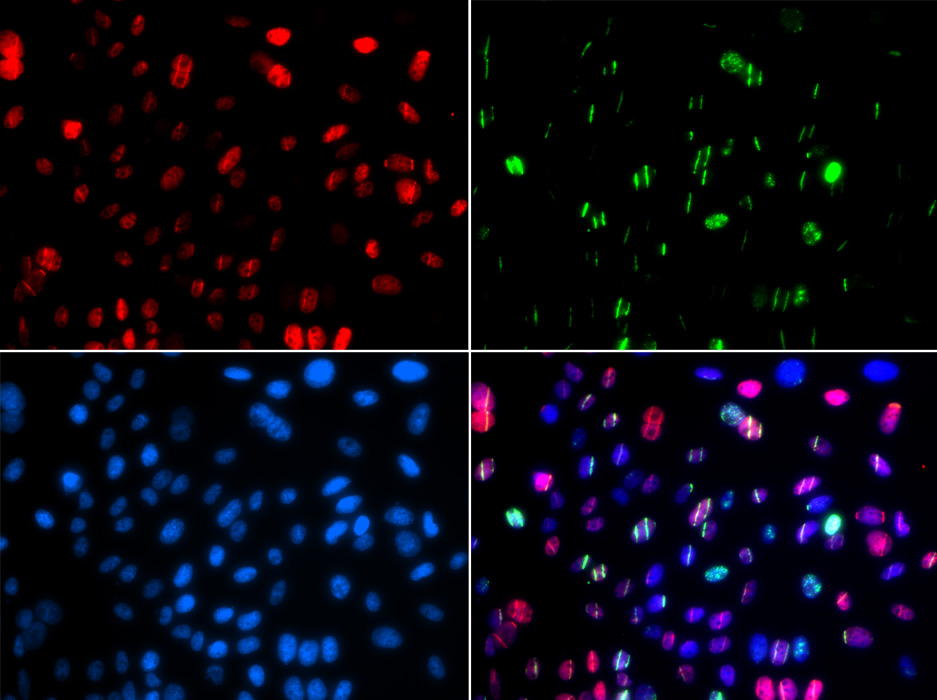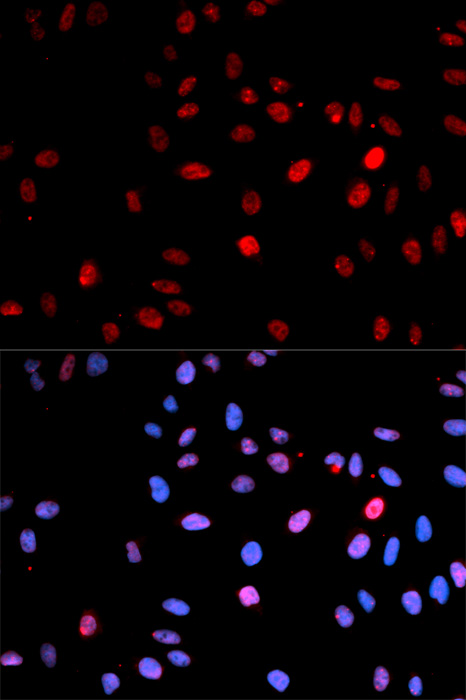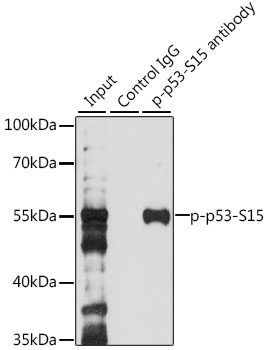Tumor protein p53, a nuclear protein, plays an essential role in the regulation of cell cycle, specifically in the transition from G0 to G1. It is found in very low levels in normal cells, however, in a variety of transformed cell lines, it is expressed in high amounts, and believed to contribute to transformation and malignancy. p53 is a DNA-binding protein containing DNA-binding, oligomerization and transcription activation domains.
Western

Western blot analysis of Phospho-p53 (Ser15) in HT-29 and 293 lysates using Phospho-p53S15 antibody.
Immunofluorescence

Immunofluorescence analysis of Phospho-p53 (Ser15) in GFPRNF168 transgenic U2OS using Phospho-TP53S15 antibody.Green:GFPRNF168 fusion protein expression for DNA damage marker,and DAPI (blue).
Immunofluorescence

Immunofluorescence analysis of Phospho-p53 (Ser15) in U2OS cells using Phospho-p53S15 antibody,and DAPI (blue).
Immunoprecipitation

Immunoprecipitation analysis of Phospho-p53 in 293T lysates using Phospho-p53S15 antibody. Western blot was performed from the immunoprecipitate using Phospho-p53S15 antibody. 293T cells were treated by UV at room temperature for 30 minutes after serumstarvation overnight,and then treated by 10% FBS at 37℃ for 30 minutes.





